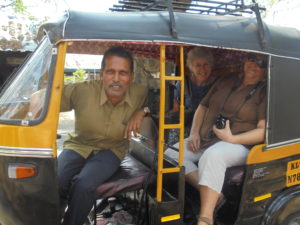
On our first full day in India, we met up with a friend who we had last seen a year before in Ethiopia. By coincidence, she was in Cochin at the halfway point of her overland trip through southern India, so we were able to spend some time together. The decision as to where we would go and what we would do was made for us by our auto-rickshaw driver, Joseph. He took us to all the main sights, waited for us while we had lunch, and dropped us off late in the afternoon at a coffee shop he recommended, which turned out to be a great place for us to natter away for a few hours! All of this for a total of 250 rupees (about £3). He had only asked for 100 rupees for the day, but we couldn’t in all conscience give him so little!
Our first stop of the day was at a laundry business. Outside, Joseph pointed out the huge old trees (rain trees, he called them) planted by the Portuguese during their colonisation in the 16th and 17th centuries. Prior to this, there were no trees in Kerala.
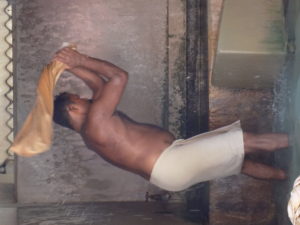
The dhobi (laundry) is a co-operative where 50 men and women wash people’s clothes as well as hotel and hospital linen. The present day workers are descendants of the original ones who were brought here in 1720 from other parts of Tamil Nadu by the Dutch government in order to wash the Dutch army’s uniform. Everything is done by hand and, in the heat of the day, it looked like really hard work! In the monsoon season, everything has to be dried under cover. Indoors or outdoors, twisted rope is used to hang the washing on, negating the need for pegs and, thus, speeding up the process. Outside, each worker has his or her own 500 metre long line, so that washing doesn’t get lost or sent back to the wrong customer. In the ironing area, there are some electric irons, but some workers still use the heavy old-fashioned hot coal-filled ones.
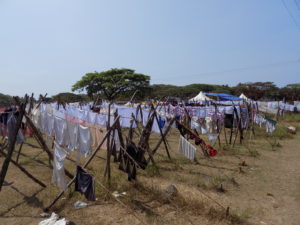
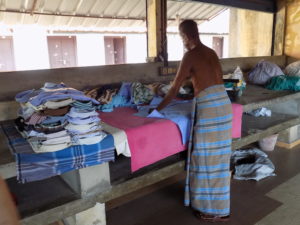
From the laundry, Joseph took us to a ginger warehouse where I saw more fresh ginger than I’ve ever seen in my life! We also saw it being preserved using calcium carbonate and lime paste. Upstairs was an amazing spice shop run by a women’s co-operative. We bought a few bits and vowed to return at the end of our two-month trip.
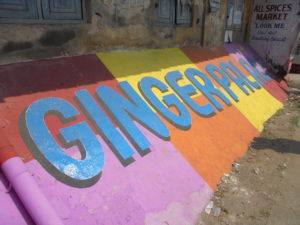
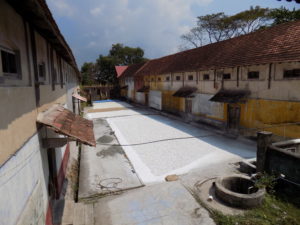
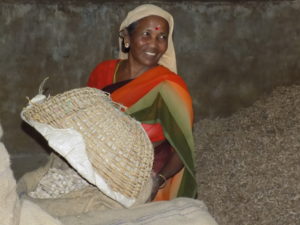
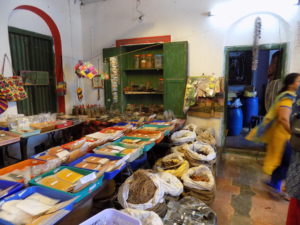
The visits to places of interest were interspersed with ‘air-conditioning stops’, as Joseph called them. These were visits to shops selling everything from saris to wooden furniture to carpets to jewellery. We didn’t want to buy anything, but went along with it as Joseph earned petrol coupons for every tourist he took along to these places.
Our next stop of the day was at Mattancherry Palace, a Portuguese-built and Dutch-renovated building dating from 1555. The main attractions are the well-preserved Hindu murals, well worth the five rupee (about 7 pence!) entrance fee. Understandably, no photos are allowed inside the palace.
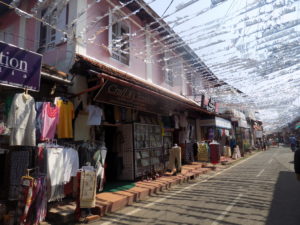
After a break for lunch, Joseph took us to the Jewish cemetery in the area of Fort Cochin known as Jew Town. There used to be a thriving Jewish community in the city, but now only five elderly Jews remain. The Pardesi Synagogue, built in 1568, now no longer used, is worth a look. Again, the entrance charge is a mere five rupees and, again, no photography is allowed inside. We enjoyed wandering the streets around the synagogue. They were full of touristy shops selling vibrantly coloured clothes, dusty antiques and aromatic oils and spices.
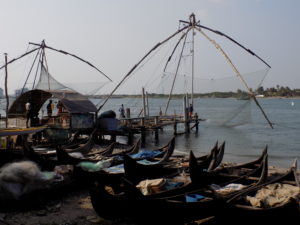
Joseph dropped us off at the seafront, so we could walk along and see the Chinese fishing nets. There was a lot of rubbish lying around which marred the experience somewhat, but then, ironically, at the end of the promenade, we came across a powerful art installation called ‘The Fish Cemetery’, highlighting the consequences of throwing plastic bottles into the sea.
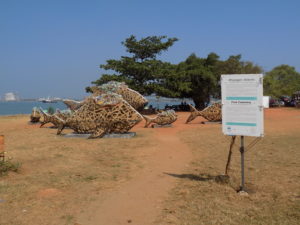
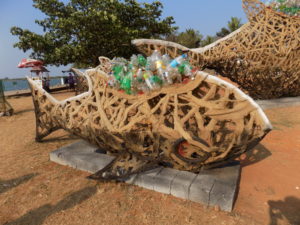
We ended our day in the Kashi Art Café where quirky art pieces by local artists are displayed amongst the tables. All in all, a fabulous day out.
Join our mailing list

Sign up to receive our monthly newsletter. Keep up with what we're doing and be the first to receive special offers and insider tips.

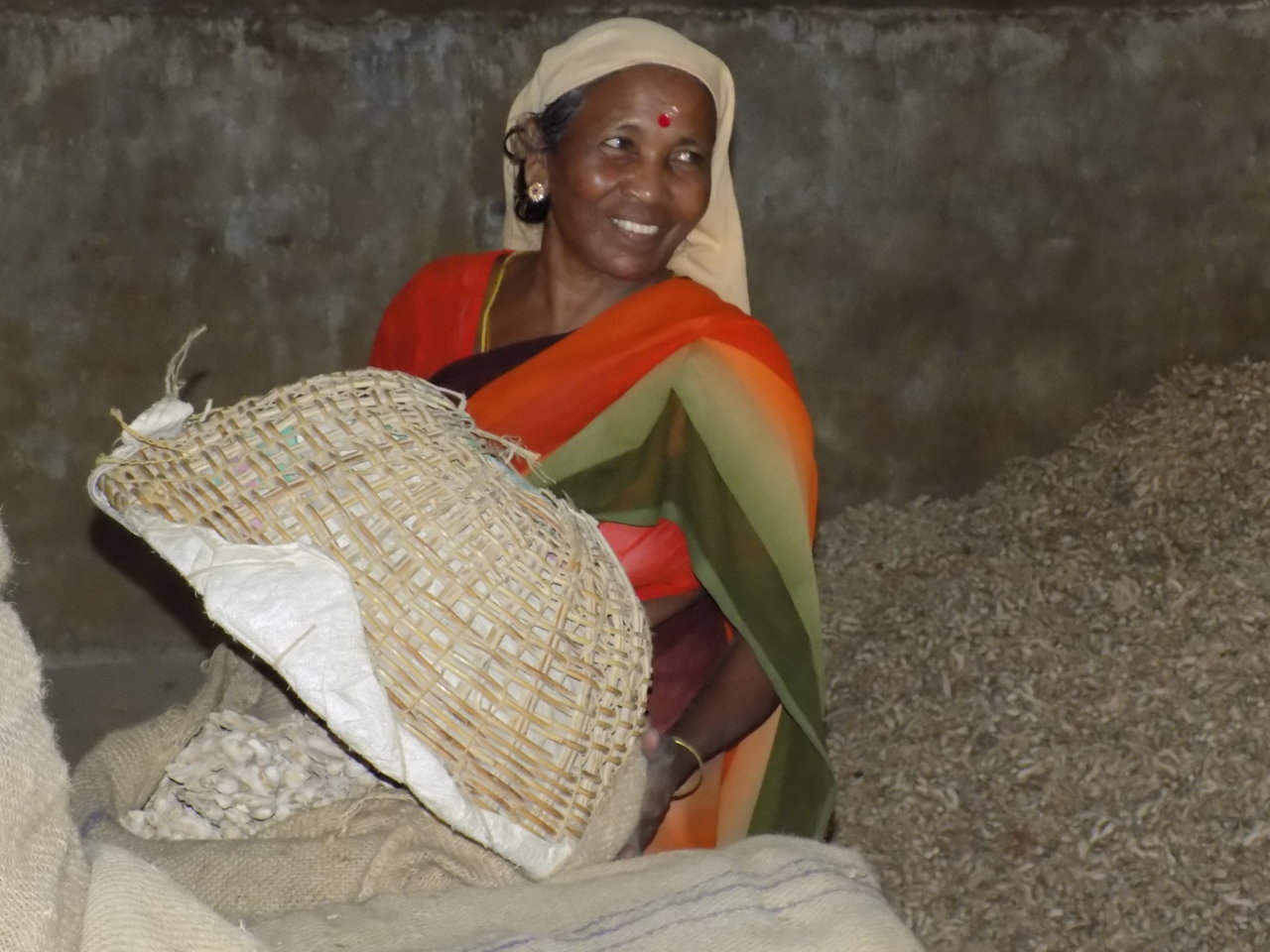

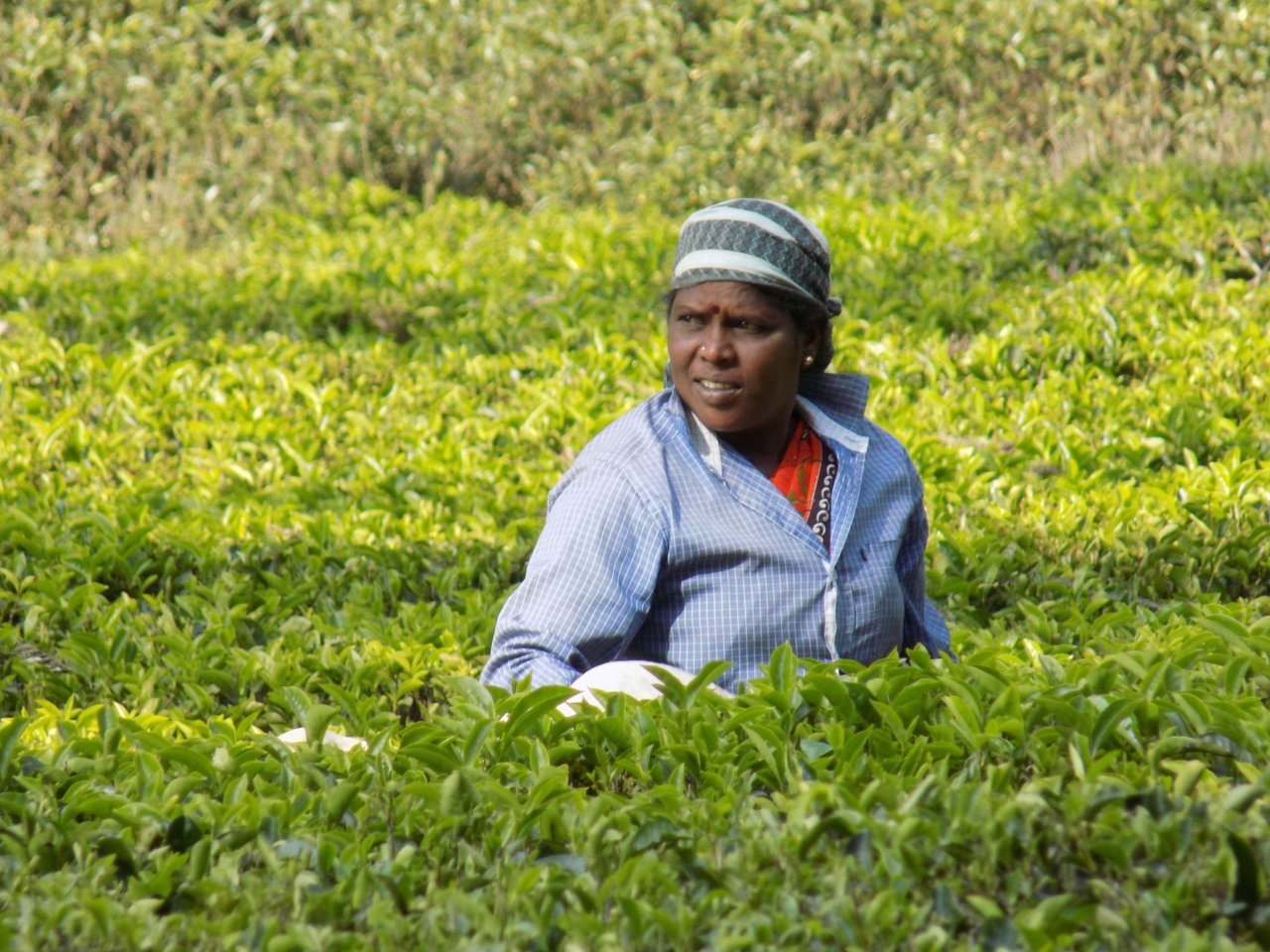







Wow! Can you explain how that twisted rope works, please? I can’t imagine why the clothes wouldn’t fly away. 🙂
If you twist two strands of rope together and put the edges or corners of the washing between the two strands, nothing will fly away! When the stuff is dry, you just have to pull it down. Have you never had a travel washing line? It works on the same principal. 🙂
Nope, always had either pegs or funtional clothes with in-built hangers.
🙂